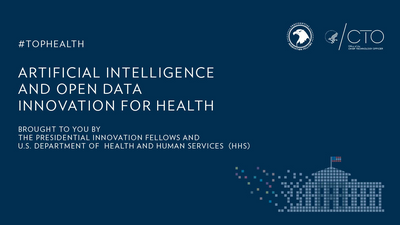Mobile
Mobile-friendly government websites improve access and user experience
People increasingly use their mobile devices to access critical information. Ensuring that government websites work well on mobile devices not only improves the overall user experience but also increases visibility of government services and information. Mobile-friendly federal websites are a part of digital inclusion, transparency, and accountability.
Related Policy
Connected Government Act

Mobile: essential knowledge
-
Eight principles of mobile-friendliness
Use these eight principles of mobile-friendliness to greatly improve the mobile-friendliness of your websites.
-
How to make a mobile paper prototype: A USA.gov case study
Learn how you can use a single piece of paper to make your mobile app work 20 percent better.
-
Mobile development strategies
Learn about the most common mobile development strategies.
-
How to track performance
A step-by-step guide to picking metrics and tools for tracking performance on your site.
-
How to contract for mobile development services
Find out how to structure a Statement of Work (SOW) for the development of mobile products.
Mobile events
Federal Crowdsourcing Webinar Series, Episode 11: Mobile Testing Program Makes Content More Accessible
Mobile news
Justice department to publish final rule to strengthen web and mobile app access for people with disabilities
On April 8, Attorney General Merrick B. Garland signed a final rule under Title II of the Americans with Disabilities Act (ADA) to ensure the accessibility of web content and mobile applications for people with disabilities. This final rule clarifies the obligations of state and local governments to make their websites and mobile applications accessible. Learn more about this rule and why the Attorney General believes it will “break down barriers that have kept people with disabilities from fully participating in American Life.” — via Department of Justice

Designing with empathy
Discover the transformative power of empathy in design with USAGov’s benefit finder. From simplifying applications to a mobile-first approach, the revamped tool not only functions efficiently in two different languages and cultural contexts, but demonstrates the consideration for users in challenging situations. Explore how empathy turned a government service into a compassionate lifeline, creating a product that genuinely understands and meets people where they are. — via USA.gov

Why the American People Deserve a Digital Government
OMB released new policy guidance for government that includes a variety of actions and standards to help federal agencies design, develop, and deliver modern websites and digital services. Memo M-23-22, Delivering a Digital-First Public Experience, will make it seamless for the public to obtain government information and services online, and help agencies fully implement the 21st Century Integrated Digital Experience Act (21st Century IDEA). — via The White House

Judiciary Launches New Federal Ticket Processing Website
Individuals can now pay tickets for minor federal violations more easily, using a redesigned website for the Judiciary’s Central Violations Bureau. The website, officially launched in early May, leverages new technologies and best design practices to improve usability and accessibility across devices, including smart phones. — via Administrative Office of the U.S. Courts

Collaborate with the TTS Public Benefits Studio
Resources on Mobile
-
Introduction to QR codes
What is a QR code and how can you create one? What are some alternatives to using QR codes? This introductory resource will help you explore your options.
-
U.S. Web Design System
A design system for the federal government that makes it easier to build accessible, mobile-friendly government websites for the American public.
-
Eight Principles of Mobile-Friendliness
Following these principles will help you make your site more usable and user-friendly.
-
An Introduction to USWDS 3.0
A design system for the federal government that makes it easier to build accessible, mobile-friendly government websites for the American public.
-
How to track performance
A step-by-step guide to picking metrics and tools for tracking performance on your site.
-
Mobile Development Strategies
The following is a list of the most common mobile development strategies.
-
A Guide to Creating Mobile-Friendly Websites
Based on a recent six-month study, this guide outlines the top five practices needed to improve the mobile-friendliness of federal websites: the optimization of JavaScript, CSS, and images, caching, and pop-ups.
-
Connected Government Act
Resources to help your agency comply with the Connected Government Act.
-
Mobile User Experience Guidelines
These mobile user experience guidelines were distilled from community feedback about mobile UX practices.
-
Mobile SOW and Developer Qualifications
Structuring a Statement of Work (SOW) for the development or modification of mobile products should be similar to any SOW your government organization issues for IT products and services.
Tools and Services
-
U.S. Digital Registry
An inventory of official government social media accounts and mobile apps.
-
U.S. Web Design System
A toolkit of principles, guidance, and code that helps agency digital teams build accessible, mobile-friendly government websites for the American public.
More News and Events on Mobile
580 posts
Justice department to publish final rule to strengthen web and mobile app access for people with disabilities
On April 8, Attorney General Merrick B. Garland signed a final rule under Title II of the Americans with Disabilities Act (ADA) to ensure the accessibility of web content and mobile applications for people with disabilities. This final rule clarifies the obligations of state and local governments to make their websites and mobile applications accessible. Learn more about this rule and why the Attorney General believes it will “break down barriers that have kept people with disabilities from fully participating in American Life.” — via Department of Justice

Designing with empathy
Discover the transformative power of empathy in design with USAGov’s benefit finder. From simplifying applications to a mobile-first approach, the revamped tool not only functions efficiently in two different languages and cultural contexts, but demonstrates the consideration for users in challenging situations. Explore how empathy turned a government service into a compassionate lifeline, creating a product that genuinely understands and meets people where they are. — via USA.gov

Why the American People Deserve a Digital Government
OMB released new policy guidance for government that includes a variety of actions and standards to help federal agencies design, develop, and deliver modern websites and digital services. Memo M-23-22, Delivering a Digital-First Public Experience, will make it seamless for the public to obtain government information and services online, and help agencies fully implement the 21st Century Integrated Digital Experience Act (21st Century IDEA). — via The White House

2023 Government UX Summit
Judiciary Launches New Federal Ticket Processing Website
Individuals can now pay tickets for minor federal violations more easily, using a redesigned website for the Judiciary’s Central Violations Bureau. The website, officially launched in early May, leverages new technologies and best design practices to improve usability and accessibility across devices, including smart phones. — via Administrative Office of the U.S. Courts

Collaborate with the TTS Public Benefits Studio
Go-Live Checklist for Federal Websites
Code.gov Better Know an Engineer: Rayvn Manuel
Code.gov Better Know an Engineer: Rayvn Manuel—We’re back with another installment of Better Know an Engineer. We are pleased to feature a friend of Code.gov and all-around amazing person, Rayvn Manuel; senior application developer and DevOps engineer at the Smithsonian Insitute's National Museum of African American History and Culture (NMAAHC). — via Code.gov




















